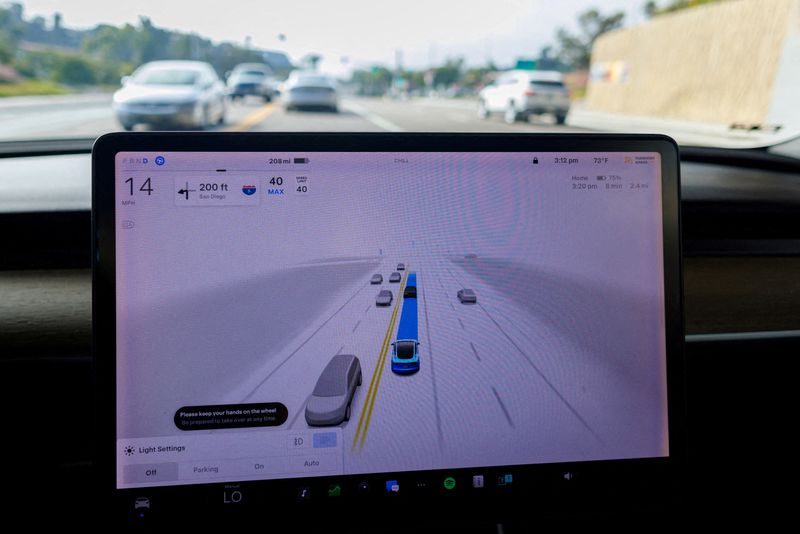Tesla FSD v13 'imperfections remain obvious': analyst
Investing.com -- Tesla’s Full Self-Driving (FSD) version 13 impressed during Truist Securities’ latest test, but analysts emphasized that “imperfections remain obvious” and prevent a full endorsement of the technology.
In their fourth round of testing, Truist analysts reported that Tesla's (NASDAQ:TSLA ) FSD v13 marked a significant improvement over previous iterations, completing a 15-mile round trip without requiring driver intervention.
The evaluation was conducted on a new Model 3, driving from Tesla’s White Plains, NY, showroom to a Starbucks (NASDAQ:SBUX ) in Bronxville, NY, and back. Conditions were favorable, with clear skies and light traffic on New Year’s Eve.
“No interventions required, and very human-like driving behavior,” the report stated, noting that FSD successfully navigated highway exits, traffic circles, and lane changes.
However, the analysts identified key shortcomings that raised concerns. During the test, FSD failed to yield to a pedestrian at a crosswalk.
“The pedestrian was waiting for cars to stop and a more mature or responsible driver would have yielded right of way, but FSD slowed suddenly and then re-accelerated through the crosswalk,” Truist analysts explained.
“We viewed this behavior as not inspiring a confidence of safety, but not worse than many less experienced or aggressive drivers.”
Another issue involved FSD’s tendency to drive near the edge of its lane, coming uncomfortably close to barriers and other vehicles. Analysts theorized that this may reflect limitations in Tesla’s reliance on a camera-only sensor system.
“It’s not clear whether imperfections are owing to the AI tech or the sensor cluster (which would be much more concerning),” the report stated.
Tesla’s AI projects, including FSD, play a crucial role in the company’s valuation. Truist estimates that AI-related initiatives such as FSD, robotaxi services, and the Optimus robot account for 78% of Tesla’s price target. “AI projects are highly significant to the stock,” the report emphasized.
While the zero-intervention drive demonstrates progress, Truist remains cautious. The analysts concluded that Tesla may eventually achieve full autonomy, but “it’s just not ready for prime time (let alone a robotaxi service) yet.”
Source: Investing.com
